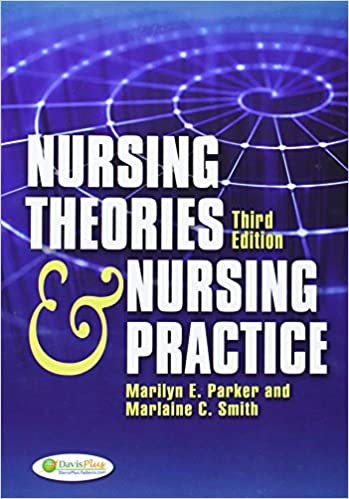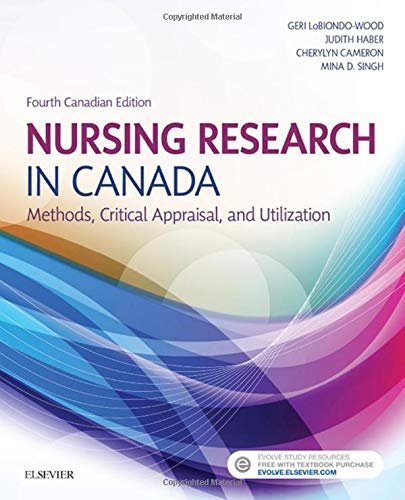Test Bank for Burns and Grove’s The Practice of Nursing Research 8th Edition Gray – Take
Test Bank for Burns and Grove’s The Practice of Nursing Research 8th Edition Gray Take
Burns and Grove’s The Practice of Nursing Research 8th Edition Gray Take – Test Bank
Burns and Grove’s The Practice of Nursing Research 8th Edition Gray Take
Burns and Grove’s The Practice of Nursing
Chapter 1. Discovering the World of Nursing Research
MULTIPLE CHOICE
1. Which best describes evidence-based practice (EBP)?
a.A combination of best research evidence, clinical expertise, and the needs and values of
patients.
b.A determination of the factors necessary to control patient responses to care.
c.The development of population care guidelines applicable to all patients.
d.The utilization of quantitative and qualitative studies to enhance patient outcomes.
ANS: A
Feedback
A: Evidence-based practice evolves from the integration of the best research evidence with
clinical expertise and patient needs and values.
B: Studies that attempt to find determinants of patient outcomes are generally experimental or
quasi-experimental. They may be used to guide EBP but do not completely define it.
CEBP is a combination of guidelines and specific patient needs and values.
D: Quantitative and qualitative studies applied to the evaluation of patient outcomes are part of
EBP but do not completely define EBP.
PTS: 1 DIF: Cognitive Level: Remembering (Knowledge)
REF: MCS: 3
2. The nurse is collecting data about the sleep patterns of breastfed babies as part of a larger
research study. Which research method will the nurse use when collecting data for this study?
a.Control
b.Description
c.Explanation
d.Prediction
ANS: B
Feedback
A: Control can be described as the ability to write a prescription to produce the desired outcome.
B: Description involves identifying and understanding the nature of nursing phenomena and the
relationships among these phenomena.
C: Explanation clarifies the relationships among phenomena and identifies why certain events
occur.
D: Through prediction, the probability of a specific outcome can be estimated in a given situation.
PTS: 1 DIF: Cognitive Level: Understanding (Comprehension)
REF: MCS: 6
3. The nurse is participating in a study and is collecting data identifying the number of obese
adults whose parents were also obese or overweight. Which research method is being used in this
study?
a.Control
b.Description
c.Explanation
d.Prediction
ANS: D
Feedback
A: Control indicates the ability to use a prescribed intervention to produce the desired outcome.
B: Description involves identifying and understanding the nature of nursing phenomena and the
relationships among these phenomena.
C: Explanation clarifies the relationships among phenomena and identifies why certain events
occur.
D: Through prediction, the probability of a specific outcome can be estimated in a given situation.
By knowing the percentage of parents of obese adults who were obese, the probability of
predicting this may be calculated.
PTS:1DIF: Cognitive Level: Applying (Application)
REF: pp. 7-8
4. The nurse reviews a study in which adherence to an asthma action plan is compared among
groups of adolescents who received different asthma education. Which research method does this
represent?
a.Control
b.Description
c.Explanation
d. Prediction
ANS: C
Feedback
A Control indicates the ability to use a prescribed intervention to produce the desired outcome.
B Description involves identifying and understanding the nature of nursing phenomena and the
relationships among these phenomena.
C Explanation clarifies the relationships among phenomena and identifies why certain events
occur.
D Through prediction, the probability of a specific outcome can be estimated in a given situation.
PTS:1DIF:Cognitive Level: Applying (Application)
REF: MCS: 7
5. A nurse manager is interested in learning which attitudes among staff nurses may indicate
relative risk of needle-stick injuries. To study this, the nurse manager will employ which method
of study?
a.Control
b.Description
c.Explanation
d.Prediction
ANS: D
Feedback
A: Control indicates the ability to use a prescribed intervention to produce the desired outcome.
B: Explanation clarifies the relationships among phenomena and identifies why certain events
occur.
C: Description involves identifying and understanding the nature of nursing phenomena and the
relationships among these phenomena.
D: Through prediction, the probability of a specific outcome can be estimated in a given situation.
PTS:1DIF: Cognitive Level: Applying (Application)
REF: pp. 7-8
6. Which is the most important result of Florence Nightingales’ data collection and statistical
analysis during the Crimean War?
a.Bringing awareness of the rigors of war to the general public.
b.Developing a process for statistical analysis and nursing documentation.
c.Identifying and defining the role of nurses in modern health care.
d.Using clinical research to evaluate the importance of sanitation, clean drinking water, and
adequate nutrition.
ANS: D
Feedback
A: This was not the most important result
B: This was not the most important result
C:This was not the most important result
D: Nightingales research enabled her to instigate attitudinal, organizational, and social changes,
including the military’s approach to the care of the sick and society’s sense of responsibility for
testing public water, improving sanitation, and preventing starvation to decrease morbidity and
mortality rates.
PTS: 1 DIF: Cognitive Level: Understanding (Comprehension)
REF: MCS: 11
7. The nurse participates in data collection in a study in which two different pain management
protocols are used with randomly assigned patients to measure differences in postoperative
recovery time. Which method of study is this?
a.Control
b.Correlation
c.Description
d.Explanation
ANS: A
Feedback
A: Control indicates the ability to use a prescribed intervention to produce the desired outcome.
B: correlation examines the relationships between different phenomena.
C: Description involves identifying and understanding the nature of nursing phenomena and the
relationships among these phenomena.
D: Explanation clarifies the relationships among phenomena and identifies why certain events
occur.
PTS:1DIF: Cognitive Level: Applying (Application)
REF: MCS: 8
8. The development of nursing theories and conceptual models in the late 1960s and 1970s
served to:
a.determine the effectiveness of nursing interventions.
b.establish the concept of evidence-based practice.
c.provide funding for nursing research.
d.provide direction for nursing research.
ANS: D
Feedback
A: Outcome studies are used to determine the effectiveness of nursing interventions.
B: The concept of EBP was developed in the 1970s and promoted by the ANCC Magnet
Designation program.
CThe NINR seeks to provide funding for nursing research.
D: the theories developed in the 1960s and 1970s helped to direct future nursing research.
PTS: 1 DIF: Cognitive Level: Understanding (Comprehension)
REF: pp. 11-12
9. Under Ada Sue Hinshaw, the National Institute of Nursing Research (NINR) began to change
its focus to:
a.funding nursing rather than medical research.
b.evaluating outcomes rather than process studies.
c.increasing the status and funding for nursing research.
d.supporting the dissemination of nursing research.
ANS: C
Feedback
AThe change in focus from medical to nursing research came about with the first nursing
programs. Specialty nursing organizations today and some nursing researchers still conduct
medical research for specific studies.
outcomes research emerged in the 1980s and 1990s to document the effectiveness of health
care services.
under Ada Sue Hinshaw, the National Center for Nursing Research (NCNR) changed its name
to the NINR to increase the status and funding of nursing research.
DThe NCNR’s purpose was to support the dissemination of nursing research.
PTS: 1 DIF: Cognitive Level: Remembering (Knowledge)
REF: pp. 12-13











